Notre-Dame, a jewel of French heritage

As a World Heritage Site since 1991, Notre-Dame Cathedral is a masterpiece of Gothic architecture. Different eras, kings, artistic trends and political upheavals have left their mark on the building. With its rich heritage, the cathedral has become a universal monument, where unity and variety mingle with the stained-glass windows and sculptures, outside and inside this colossal work of art.
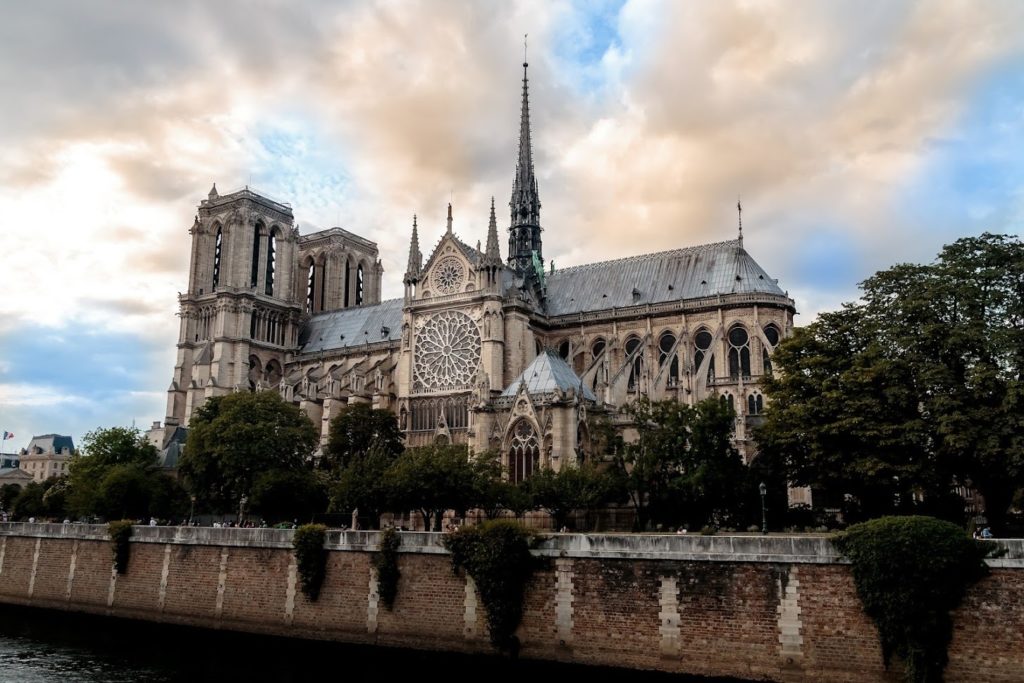
From the Middle Ages to the modern era
Started in 1163, at the request of Bishop Maurice de Sully, the construction of Notre-Dame spanned more than two centuries. Changing tastes during the Renaissance pronounced the formal rejection of Gothic art, associated with the barbarism and obscurantism of previous centuries. As the epitome of this era, the cathedral was scorned by artists. In the 17th century, it won the favour of King Louis XIII, whose pious wish* was granted by the sumptuous transformations of the 18th century. Carried out from 1708 to 1725, under the leadership of Cardinal de Noailles and architect Robert de Cotte, these works were the most extensive the cathedral has known: they account for many additions (flying buttresses, gables, galleries, etc.) and the reworking of the choir in the Baroque style, with Nicolas Coustou’s Pietà majestically enthroned at the foot of the Cross.
*In 1637, out of devotion to the Virgin, Louis XIII undertook to build a new high altar for Notre-Dame. His wish would be commemorated, in the new 18th-century choir, by a statue of the sovereign kneeling in front of the Pietà and offering his crown to the Virgin.
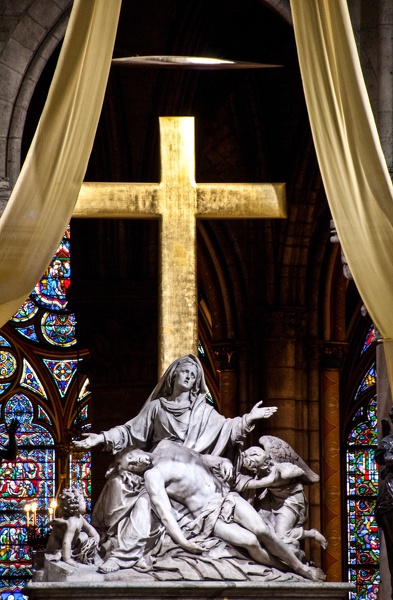
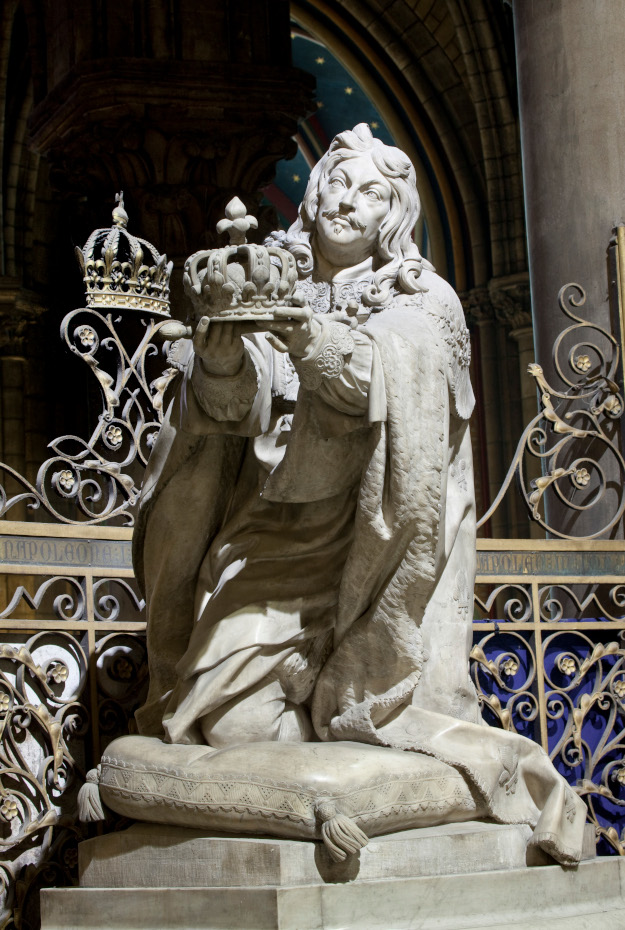
The 19th-century construction site
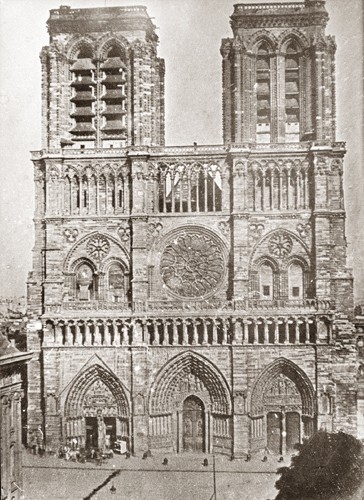
Mistreated by revolutions and looting, the cathedral fell into ruin at the beginning of the 19th century. The task awaiting its restorers in 1844 was daunting, and the architectural challenge ambitious. Viollet-le-Duc made the damaged monument a playground where his innovative neo-Gothic style, with its ornamental fantasies, disturbing gargoyles and arbitrary recreations of the medieval freely expressed its principles. His work transformed Notre-Dame into a composite cathedral, where primitive and radiant Gothic come together in a unified whole. He restored its portals, created hundreds of statues for its facade, had new stained-glass windows installed, reappropriated the style of the 13th century in daring creations, of which the lead spire remains the most iconic.
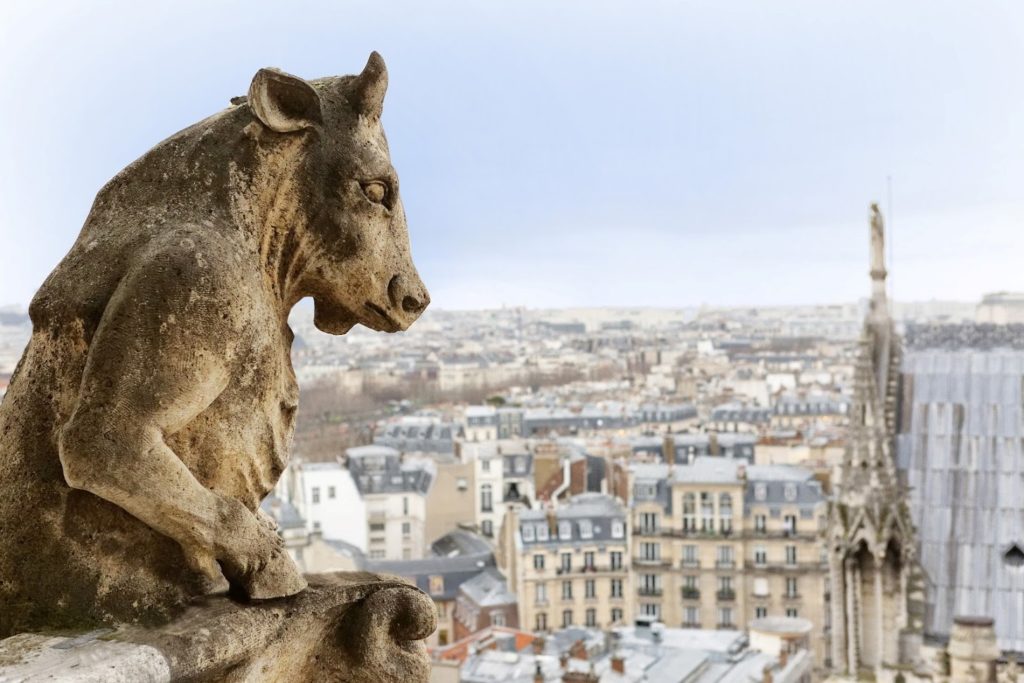
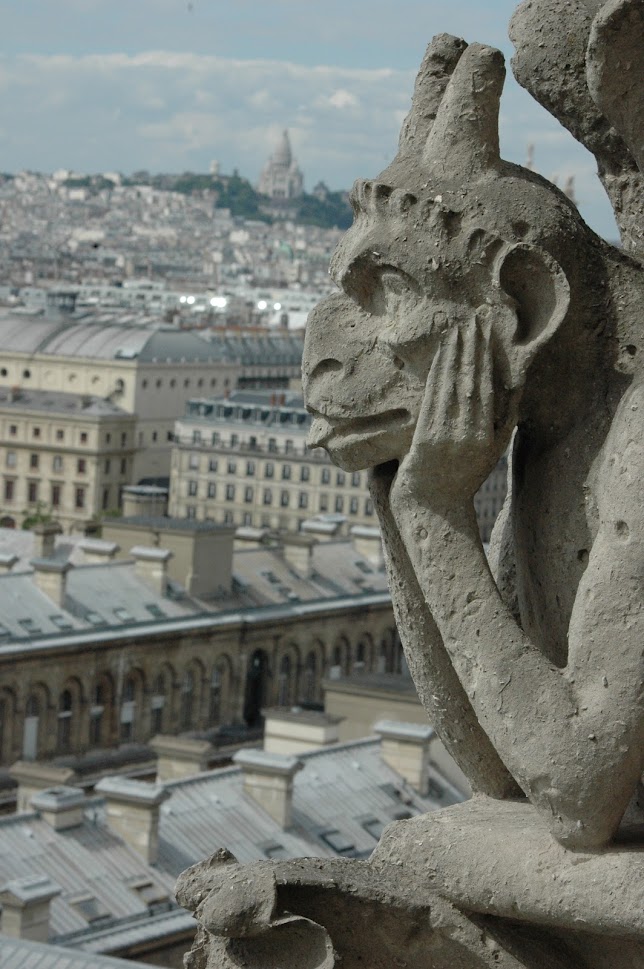
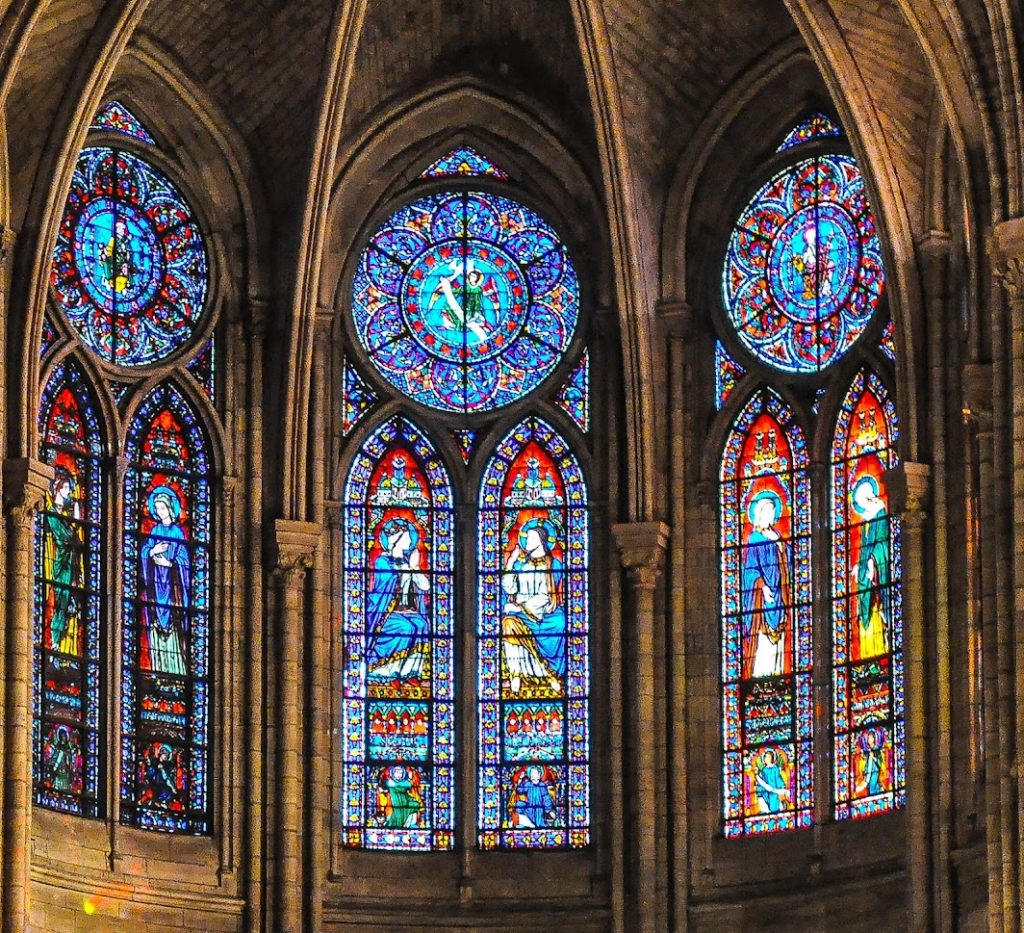
This was the cathedral, featured in the fiction of Victor Hugo, revived by a modern architect, that we knew until 2019. Its stone lacework, its medieval rose windows, its thousand and one sculptures of saints and kings all make it a jewel of our heritage. Before the fire, it was also France’s most visited monument with 13 million visitors per year, an average of 30,000 a day.
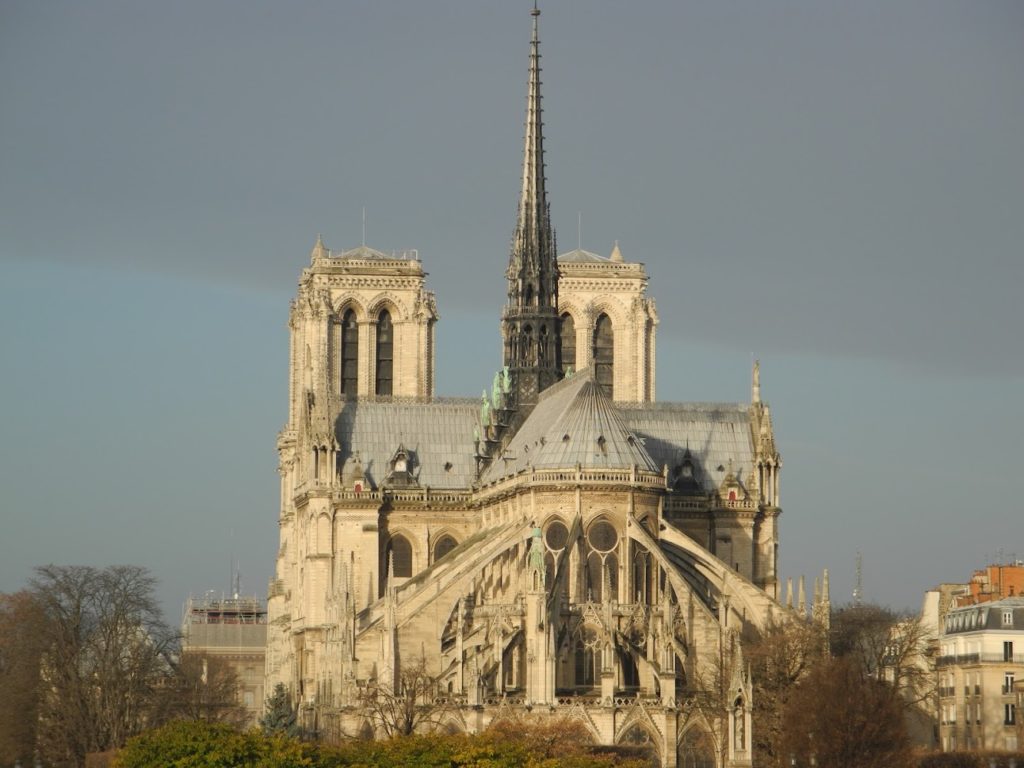
A stone museum : the arts in Notre-Dame

To the architectural heritage of Notre-Dame is added that, more discreet but no less rich, of its art collections: statues, paintings, tapestries, not to mention the 2,000 liturgical objects, reliquaries, sacred vessels, etc. that make up the Treasury. Either donations from patrons or commissions from the church, these works of a wide variety of genres and styles have built up over time, despite the regular looting the building has suffered. Luckily, most of them escaped the fire. Among the survivors, the “Mays“, which decorated the side chapels, are a major historical and pictorial legacy. That is why the interior design programme plans to further enhance them and, more generally, to highlight the beauty and diversity of the treasures kept in Notre-Dame.
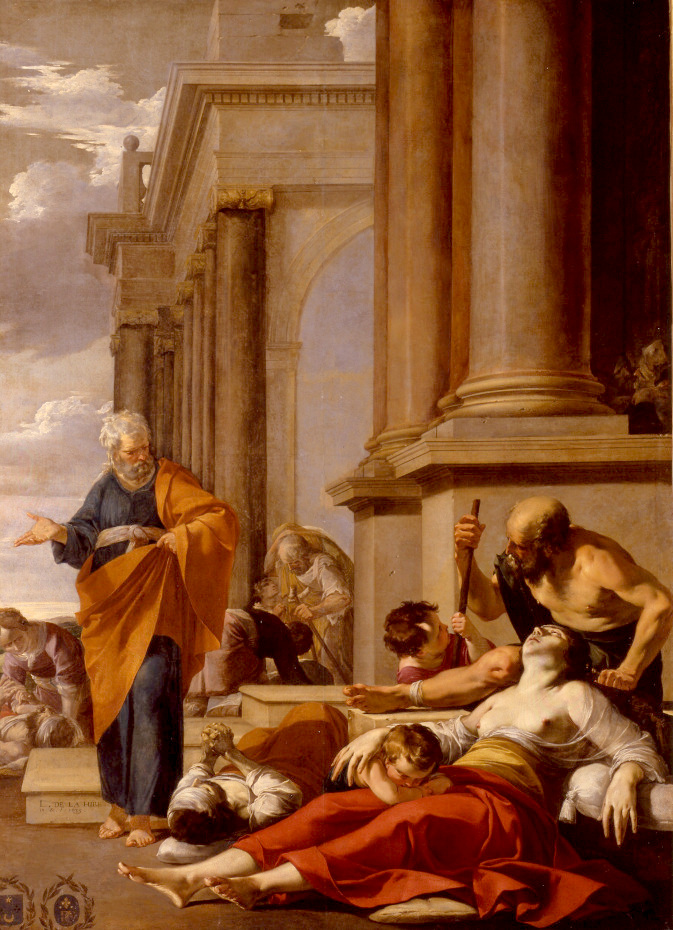
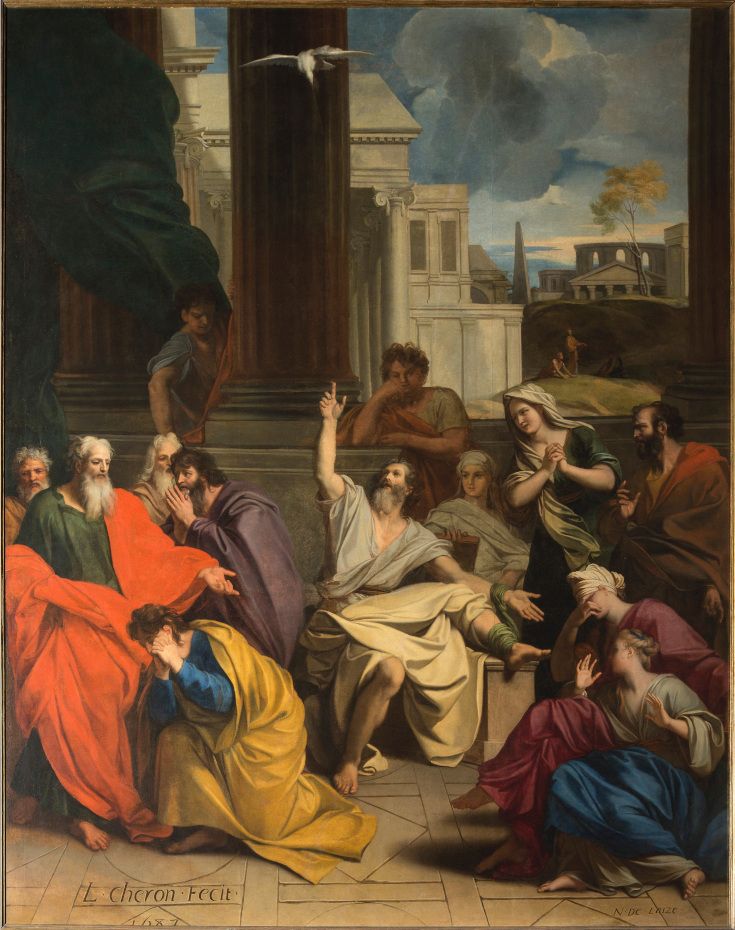
© Photos Diocèse de Paris, Notre-Dame de Paris